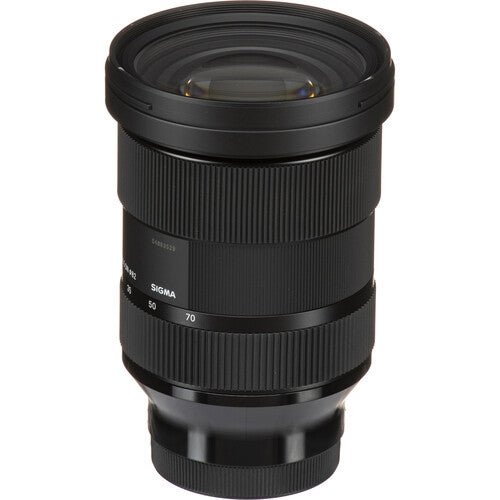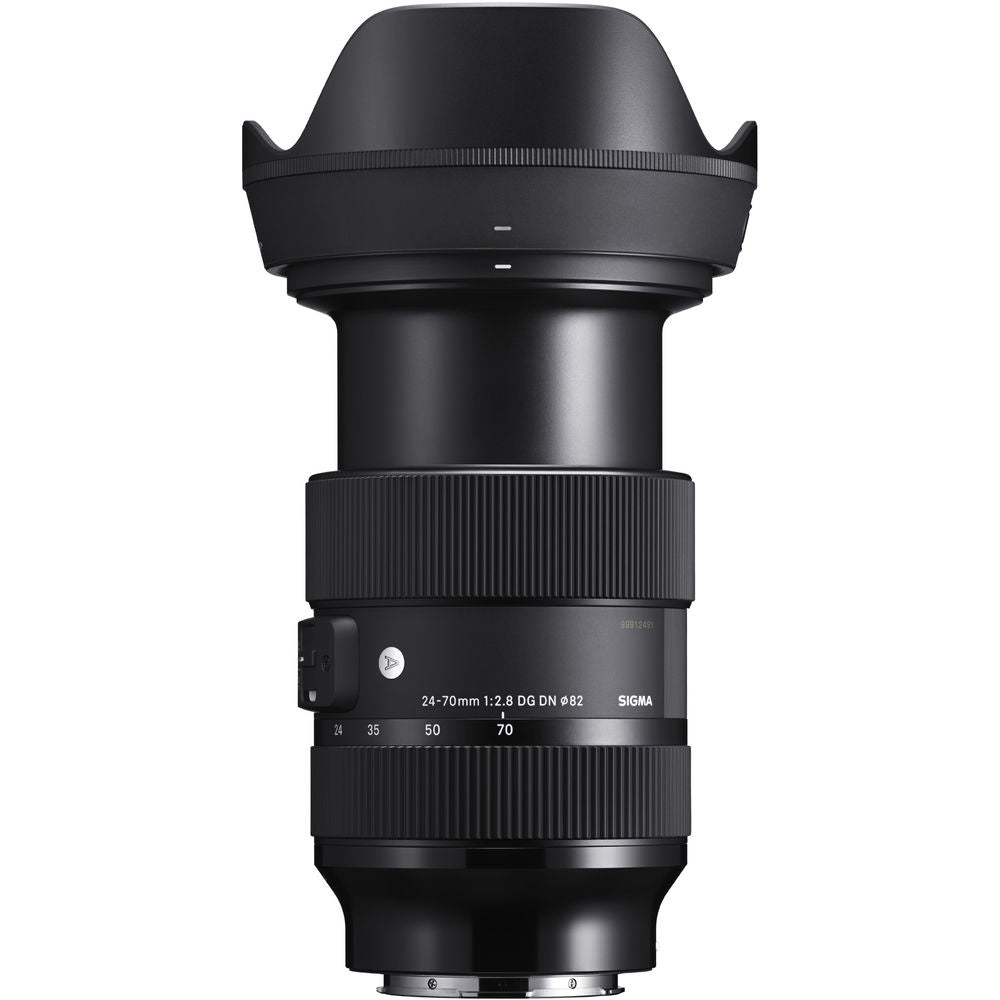Product Description
Sigma 24-70mm f2.8 DG DN Art Lens - Sony E
- Delivers stellar optical performance
- Wide-angle 1:2.9 to telephoto 1:4.5 and max focusing distance of 18cm
- Suitable for a variety of photographic genres and shoots
- Features 11 rounded diaphragm blades and 19 elements in 15 groups
- Includes a zoom lock switch
- Dust-and-splash-proof mount
- High-precision rugged brass bayonet mount
- Compatible with the latest full-frame mirrorless camera systems
- Comes with a lens hood featuring a lock
- Sigma’s A1 MTF measuring system
- Works with Lens Aberration Correction
- Eligible for the mount conversion service

The Sigma 24-70mm f2.8 AF DG DN Art Lens utilises the highest tier of “Art Zoom” performance to deliver a powerful lens that is adaptable to different shooting environments and photographic styles.
The lens’ size and weight has been greatly reduced by exploiting the advances made in mirrorless camera systems. This had no effect on the high-resolution and uniformity visible from the centre to the periphery, across the entire zoom range. Whether you are an advanced amateur photographer or a hardened professional this lens will meet your demands.

Designed for the Latest Mirrorless Cameras - The Sigma 24-70mm f2.8 AF DG DN Art Lens has been designed for use with the latest mirrorless camera systems; notably L-Mount and Sony-E Mount cameras. Thanks to this, it can exploit the advances made in said mirrorless cameras making it suitable for a wide array of photographic genres.

Whatever the situation, the lens will deliver its best performance when used by an advanced amateur photographer or a professional. The AFL button is a great example of the combined effect of the lens and the mirrorless camera.

A range of functions can be delegated to the AFL button on the lens from the camera body; increasing the operability during shooting. The ease of focus is assured thanks to the introduction of the stepping motor and the cutting-edge algorithm which effectively achieves a balance between acceleration and quietness of the AF drive.

Additionally, the lens works with Eye-Detection AF which has been frequently adopted in mirrorless cameras; more so than DSLRs. This is great for high-precision focusing during portrait photography.




























